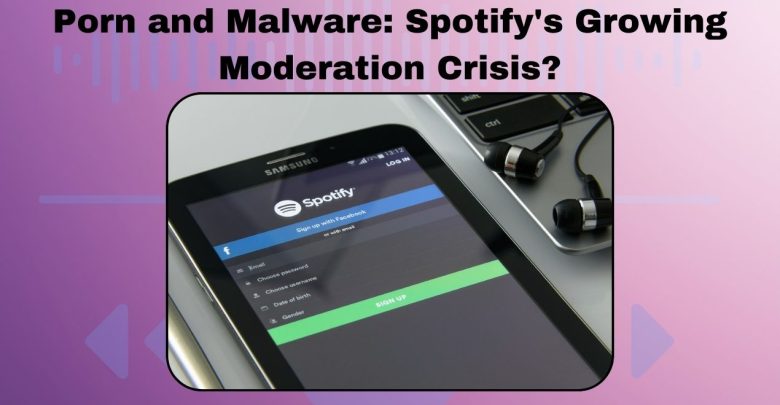Latest News
Is Spotify Failing to Protect Users from Harmful Content?

Spotify Faces Challenges with Explicit Content and Malware Exploitation
Spotify, the world’s most popular music streaming platform, is under scrutiny again as explicit and inappropriate content finds its way into search results, raising significant concerns about the effectiveness of its moderation systems. The issue has resurfaced with reports of pornographic videos appearing in search results, playlists, and podcasts, even being used as a vector for spreading malware.
Explicit Content in Search Results
The latest incident came to light when a Reddit user shared a screenshot showing a pornographic video in the search results for rapper M.I.A. This was reported by The Verge, which noted that while it couldn’t replicate the exact search result, it found other sexually explicit videos hidden under the “Video” tab in Spotify’s search results. These videos were often uploaded by accounts with generic or nonsensical names, exploiting a loophole in Spotify’s podcast moderation system.
Spotify’s Response
Spotify spokesperson Laura Batey confirmed to The Verge that the reported videos have been removed for violating the platform’s policies, which explicitly prohibit sexually explicit material. However, Spotify has yet to provide a detailed explanation of how these videos bypassed their moderation process.
Recurring Issues with Moderation
This is not the first time Spotify has faced issues with explicit content. Users have previously reported encountering:
- Sexually explicit material in search results and algorithmic playlists.
- Erotic audio tracks disguised as legitimate music or podcasts.
- Graphic images uploaded to podcast thumbnails.
In 2022, Vice reported the widespread prevalence of such content on the platform. These incidents highlight a recurring problem that tarnishes Spotify’s user experience and raises questions about its ability to enforce content policies effectively.
Exploitation for Malware and Spam
Adding to Spotify’s woes is the platform’s misuse by malicious actors to spread malware and spam. Security researchers have uncovered:
- Playlist and podcast descriptions being used to distribute links to harmful websites and pirated software.
- Search engine optimization (SEO) manipulation to increase the visibility of malicious content both within Spotify and on external search engines like Google.
For example, spammers often use irrelevant audio content and trending topics such as TikTok or adult content to lure unsuspecting users. Even when Spotify blocks certain keywords on its platform, Google searches for those keywords can lead users to harmful links hosted within Spotify playlists and podcasts.
A Growing Concern for Users and Moderators
The recurring presence of explicit and harmful content raises several pressing concerns for Spotify:
- Moderation Loopholes: The platform’s current systems appear inadequate in preventing such content from being uploaded and accessed.
- User Safety: Exposure to explicit material and malware poses a serious risk to users, especially minors.
- Platform Integrity: Persistent issues with moderation and exploitation could harm Spotify’s reputation and trustworthiness.
What’s Next for Spotify?
While Spotify has taken steps to remove reported content and block certain keywords, these measures appear insufficient against the sophisticated tactics used by malicious actors. To regain user trust and ensure a safer platform, Spotify must:
- Enhance its moderation technology to better detect and remove explicit and harmful content.
- Strengthen human review processes to complement automated systems.
- Collaborate with security researchers to address vulnerabilities and preemptively counteract malicious activities.
- Increase transparency about its moderation challenges and the steps it is taking to resolve them.
As Spotify continues to grow as a leading global platform, addressing these issues effectively will be critical in maintaining its reputation and providing a secure, enjoyable experience for its millions of users.
Also Read : WhatsApp Picture in Picture mode rolled out






